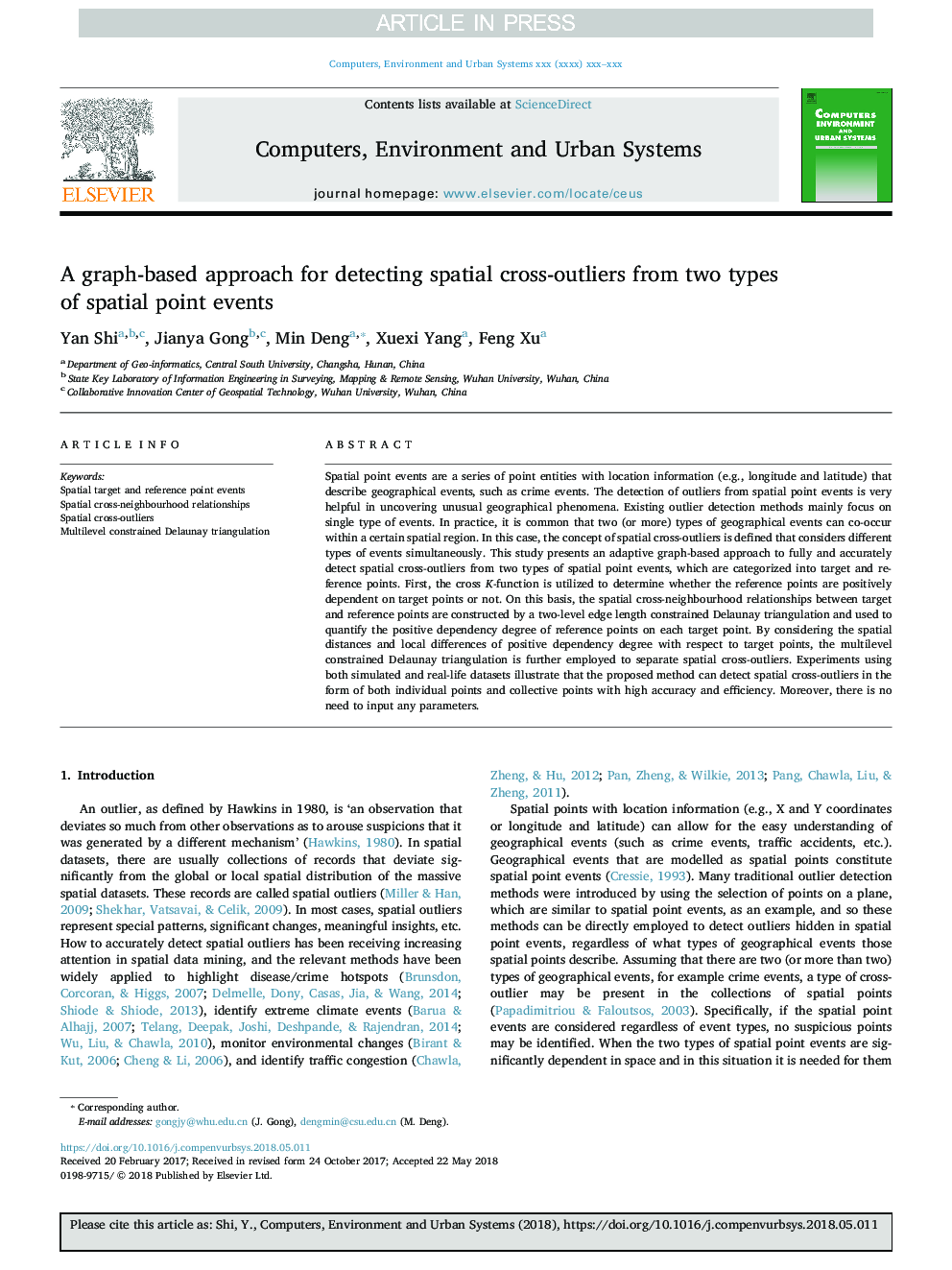| Article ID | Journal | Published Year | Pages | File Type |
|---|---|---|---|---|
| 10151464 | Computers, Environment and Urban Systems | 2018 | 16 Pages |
Abstract
Spatial point events are a series of point entities with location information (e.g., longitude and latitude) that describe geographical events, such as crime events. The detection of outliers from spatial point events is very helpful in uncovering unusual geographical phenomena. Existing outlier detection methods mainly focus on single type of events. In practice, it is common that two (or more) types of geographical events can co-occur within a certain spatial region. In this case, the concept of spatial cross-outliers is defined that considers different types of events simultaneously. This study presents an adaptive graph-based approach to fully and accurately detect spatial cross-outliers from two types of spatial point events, which are categorized into target and reference points. First, the cross K-function is utilized to determine whether the reference points are positively dependent on target points or not. On this basis, the spatial cross-neighbourhood relationships between target and reference points are constructed by a two-level edge length constrained Delaunay triangulation and used to quantify the positive dependency degree of reference points on each target point. By considering the spatial distances and local differences of positive dependency degree with respect to target points, the multilevel constrained Delaunay triangulation is further employed to separate spatial cross-outliers. Experiments using both simulated and real-life datasets illustrate that the proposed method can detect spatial cross-outliers in the form of both individual points and collective points with high accuracy and efficiency. Moreover, there is no need to input any parameters.
Related Topics
Physical Sciences and Engineering
Computer Science
Computer Science Applications
Authors
Yan Shi, Jianya Gong, Min Deng, Xuexi Yang, Feng Xu,
